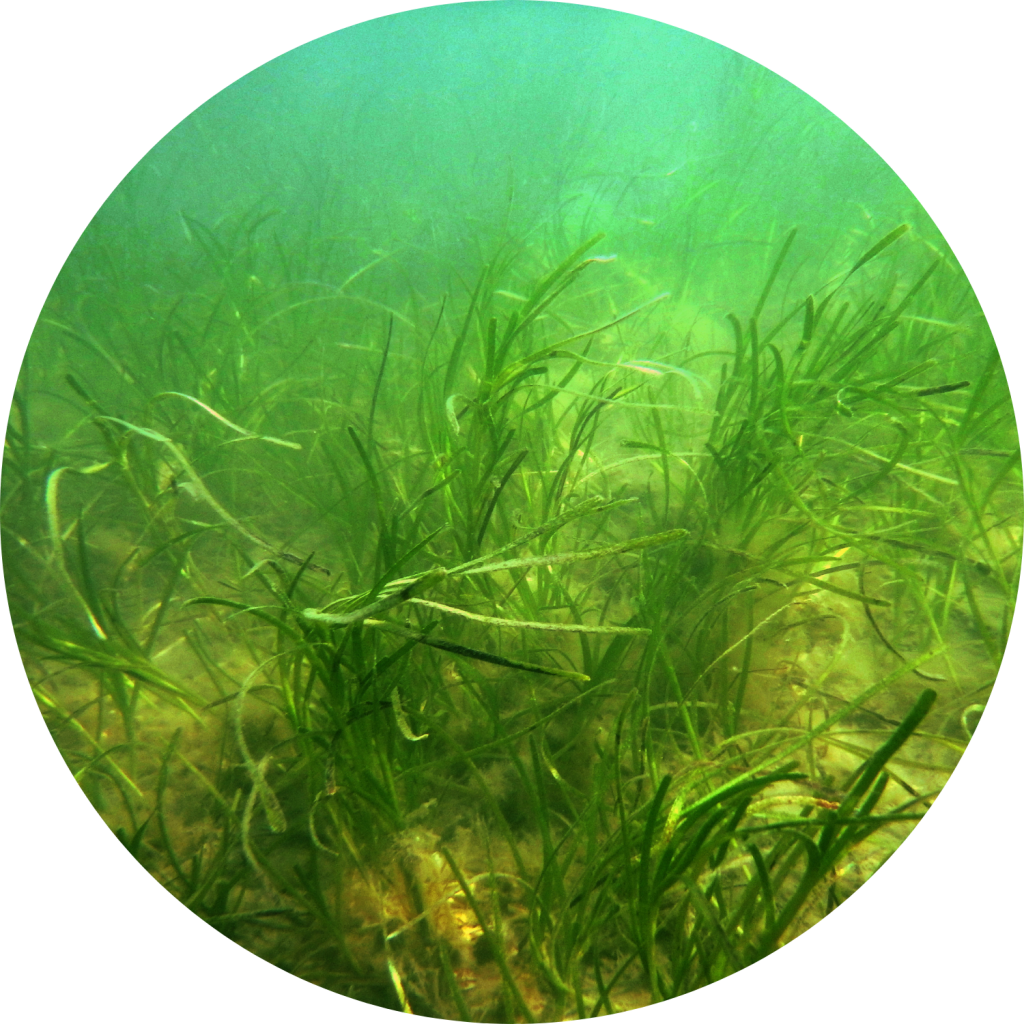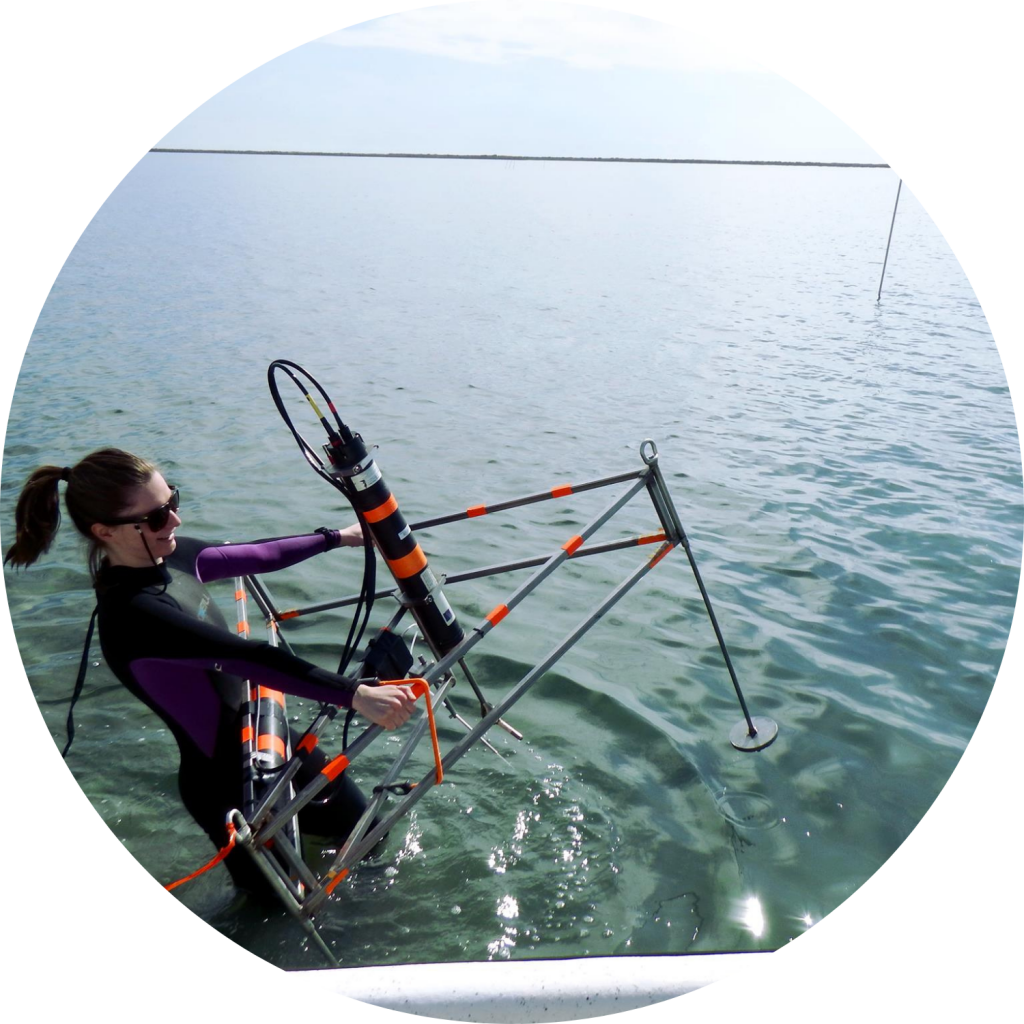Blue Carbon
Seagrass meadows are metabolic hot spots in coastal waters that sequester and store large amounts of carbon that can remain buried in sediments for decades to centuries if meadows are not disturbed or degraded. This ‘blue carbon’ sequestration is one of the nature-based solutions to combat climate change. Marine heat waves are now threatening seagrass and the blue carbon stored in their sediments. Quantifying seagrass carbon stocks and the long-term rates of net carbon accumulation is key to establishing realistic blue carbon benefit assessments. Our work has been foundational for establishing seagrass blue carbon offset projects for the voluntary carbon market.
Key Findings

Restoration reinstates blue carbon stocks
• Rates of sediment carbon storage in seagrass meadows restored by seeding is equivalent to natural meadows after a decade (Greiner et al. 2013)
60% of sediment carbon is non-seagrass, either advected into the meadow from adjacent ecosystems or produced in situ (Greiner et al. 2016; Oreska et al. 2017a)
• 10% of sediment carbon in seagrass meadows is derived from adjacent marshes; 50% benthic microalgae largely produced in situ, not advected into the meadow as previously believed (Greiner et al. 2016; Oreska et al. 2017a)
• Drivers of sediment carbon stocks vary on the plot and meadow scales. On the plot scale (m2), meadow age and shoot density determine sediment carbon stocks; at the meadow scale, proximity to the meadow edge is the most important driver (Oreska et al. 2017b)
• Seagrass blue carbon sediment stocks are vulnerable to marine heatwaves. A single heatwave caused a 20% loss of sediment carbon; where seagrass meadows were more resilient, this loss was reduced by half (Aoki et al. 2021)

Restoration reinstates blue carbon sequestration in plant biomass
Aquatic eddy covariance measurements made by the Berg Lab at UVA show that:
• Seagrass meadows strongly enhance ecosystem metabolism, with rates of primary production and respiration 10-25x higher than adjacent bare sediments (Hume et al. 2011, Rheuban et al. 2014a,b)
• Seagrass meadows switch from being a sink to a source of carbon if marine heatwaves cause plant die-off; during recovery, the meadow again becomes a carbon sink (Berger et al. 2020)
• In situ measurements show no stimulation of photosynthesis at high CO2 and low O2 concentrations, questioning if seagrass will be ‘winners’ in future oceans (Berg et al. 2019.

